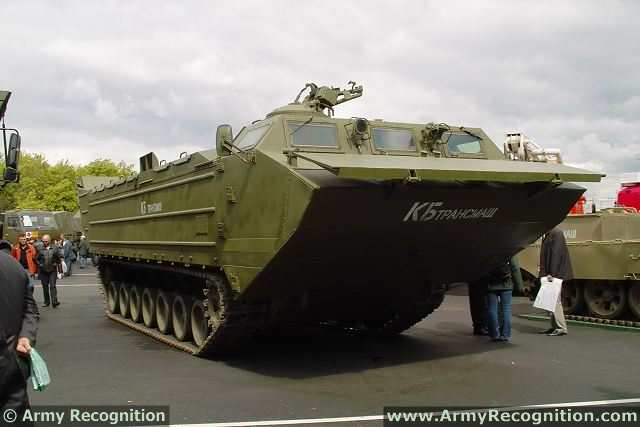 George1 Sat May 30, 2015 6:15 am
George1 Sat May 30, 2015 6:15 am
This is an article about naval infantry's role in Soviet times from [i]globalsecurity[i]
Naval Infantry - Soviet History
Soviet military strategy eventually recognized the importance and complexity of amphibious operations. By the end of the Khrushchev period, the Soviet Union had commenced to break out of her continental shell and began to assert influence and interests worldwide. However, Khrushchev never succeeded in fully reshaping Soviet military power to support a political strategy of global dimensions. The succeeding regime saw this as one of their basic tasks. The Soviets re-evaluated their position in the early 1960s and re-activated the Soviet Naval Infantry in 1964, when Naval Infantry became a combat arm of the Soviet Naval Forces.
In 1964 Soviet fleet responsibilities encompassed the protection of fleet areas, the expanded merchant fleet, fishing fleet, and oceanic research ships. By 1967 this responsibility clearly extended to the protection of Soviet interests ashore. Since then, the Soviet Navy has been used in various ways for political and diplomatic purposes. Traditionally, the Soviet Union did not rely on her navy for the external projection of power. But the Soviet Union began relying more and more on her navy for such projection as the reactivation of naval infantry, the deployment of the Kiev class carrier, and the construction of ocean-going landing ships clearly indicate.
A key problem for the Soviet Navy would be assuring naval passage to the open oceans from the Baltic Sea, Black Sea, and Sea of Japan, and denying to enemy forces the strategic straits into these seas and the land areas near the Fleet bases. The Soviets and their Warsaw Pact allies maintained amphibious forces in the Barents Sea area, in the Baltic and Black Seas, and in the Sea of Japan. The effectiveness of operations of these forces would probably vary widely. Amphibious raids or counteroffensives would probably be conducted to outflank NATO forces in coastal theaters. Amphibious forces would be limited to regimental size in the Northern Fleet, to two regiments in tlte Pacific and Black Sea areas, and to about three regiments in thc Baltic. Amphibious operations in thc Baltic would probably include Polish amphibious troops and would be coordinated with airborne assaults and with major ground offensives.
The North Cape of Norway could probably be taken fairly readily if the Norwegian brigade normally deployed there were not reinforced.
In the Baltic, Soviet and other Warsaw Pact forces could probably capture thc Danish islands, if the Danish air and ground forces on Zealand were not reinforced, and link up with land forces attacking Jutland.
In the Black Sea area, strong Turkish defenses and difficult terrain would make a coordinated land and sea assault on the Turkish straits more difficult. The Soviets probably could not seize these Straits quickly.
Soviet Naval Infantry capabilities in the Pacific were insufficient for conducting amphibious assaults on the Japanese home islands to secure exits from the Sea of Japan.
Exercise 0kean in April-May 1970, was one of the largest peacetime naval maneuvers conducted by the Soviet Union. These maneuvers included several amphibious assaults. In the Northeim Fleet area at least two battalions of naval infantry from the Baltic Fleet conducted an amphibious assault on the northern portion of Ry~bachiy Peninsula. The tasks assigned the naval infantry force were familiar ones: conduct an amphibious landing, seize a beachhead, and hold it until the arrival of follow-on ground forces. "Alligator" and "Polnocny" landing ships approached the beach preceded by Soviet minesweepers. Surface vessels and shore-based air support provided the necessary cover.
By 1989 Naval Infantry consisted of 18,000 marine troops organized into one division and three brigades. Naval Infantry had its own amphibious versions of standard armored vehicles and tanks used by the Ground Forces. It has the capability to conduct tactical landings with highly mobile forces, air cushion vehicles, and landing ships.
Its primary wartime missions would be to seize and hold strategic straits or islands and to make seaborne tactical landings behind enemy lines. During the 1980s Soviet Naval Infantry exercises in the Kuril Islands north of Japan indicated that the intended target of Naval Infantry was the shores bordering various choke-points. In a conflict, these troops would most likely be sent ashore to capture the Dardanelles or the Kattegat straits and then wait for rapid reinforcement.
---------------------------------------------------------------------------------------------
Today i think more possible engagements today for Naval Infantry concerning areas could be Kuril Islands and Bosporus straits.
The role would be to act as a spearhead force until ground forces reinforcements arrival



















